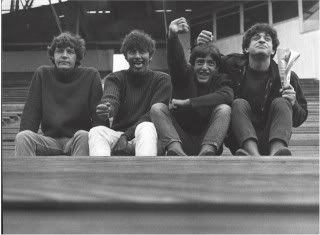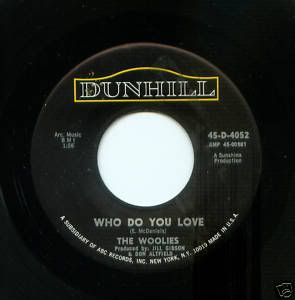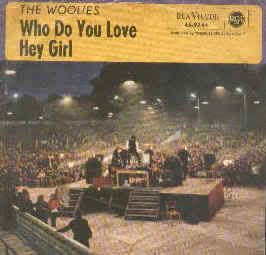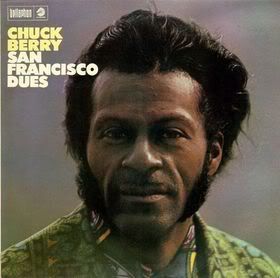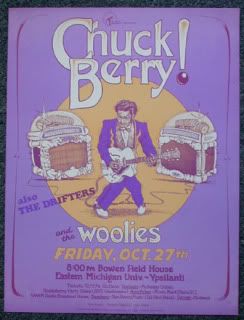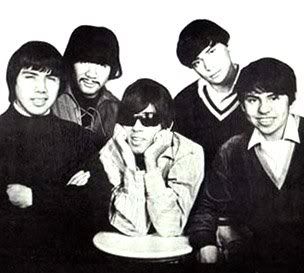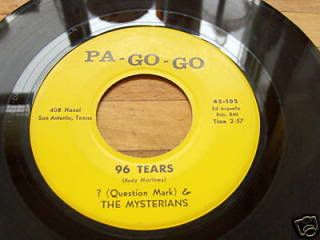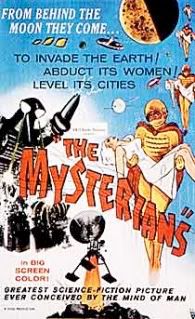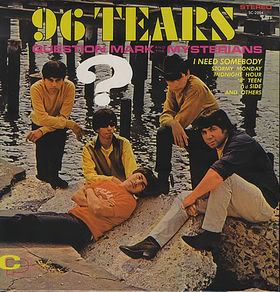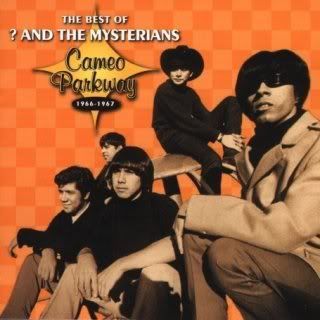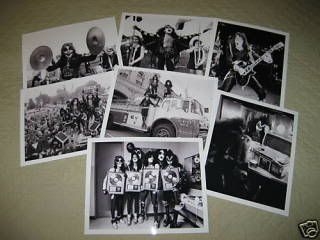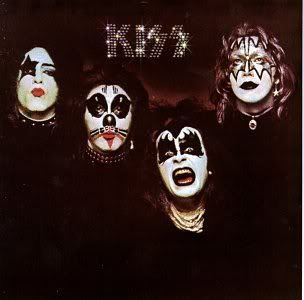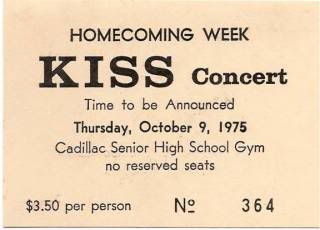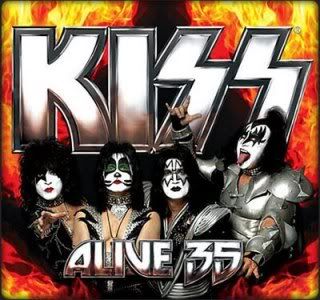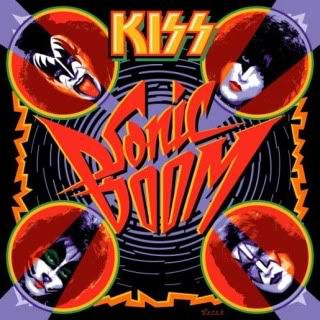
Michigan rock band The Frost
cut three albums for Vanguard Records
in 1969-1970. The group included clockwise
from top, Dick Wagner, Bob Rigg, Don Hartman
and Gordy Garris.
By STEVE SEYMOUR
Before Dick Wagner met success as a guitarist and collaborator with Alice Cooper and Lou Reed, his career path took him through northern Michigan communities like Alpena and Escanaba.
Fans of Michigan music know Wagner was featured in The Frost, prominent in the Detroit hard rock scene of the late 60s and early 70s, and first emerged as leader of the Bossmen.
A Saginaw based garage band, the Bossmen were comprised of Wagner (lead guitar), Warren Keith (piano), Lanny Roenicke (bass) and Pete Woodman (drums). Everybody sang but Woodman.
The Bossmen were well-received as a live act at venues such as Daniel's Den, a teen hang-out in Saginaw, and began issuing 45 rpm singles on local labels in 1965.
Seeking to broaden the band's base, Wagner even took the Bossmen to the Upper Peninsula late in the year.
They were booked to play a Holiday Ball for high school students at Marco's Stardust Lounge in Escanaba on Tuesday, Dec. 28, 1965.
Considering the travel distance from the band's lower Michigan home, the 9-12 dance was appropriately themed "Far Away Places."
"I certainly do remember the gig in Escanaba," Wagner told me recently.
"Our bus blew out its engine, and we had to leave it at a gas station about 25 miles out of town. (We) had a friend drive up from Saginaw the next day to give us a ride home," Wagner recalled.
Remembering "lots of snow and ice," Wagner said the Bossmen didn't return to pick-up the disabled vehicle.
Back home, the Bossmen continued performing and cranking out singles on such labels as Soft, M & L, Dicto and Lucky Eleven. Radio stations snapped up the records for airplay in the mid-Michigan area.
Rhythm guitarist Mark Farner, a future member of Grand Funk Railroad, joined the Bossmen as 1966 wore on.
Their most successful single may well be "Baby Boy" which reached No. 2 on WTRX in Flint on Dec. 9, 1966.
When the group broke up in early 1967, Wagner suddenly found himself without a band.
On a trip to Alpena, he met with local favorites Bobby Rigg and the Chevelles, a rival band which also played extensively at Daniel's Den.
Wagner began playing with the Chevelles, including Don Hartman (guitar, harmonica, vocals), Bobby Rigg (drums, vocals) and Jack Smolinski (bass).
Calling themselves the New Bossmen, then Dick Wagner and the Frosts, the group released two singles on the Date label in 1967.
The Frost's line-up and name were finalized in 1968 when Gordy Garris (bass, vocals) replaced Smolinski. Garris was a member of The Beaux Jens, a high school band from Grand Ledge, which recorded the single "She Was Mine."
Known for their high energy shows, The Frost were soon embraced by the burgeoning regional rock scene and were the contemporaries of Bob Seger, Mitch Ryder, MC5, SRC, Iggy Pop & the Stooges, and the Amboy Dukes.
They played at Detroit's most prestigious venues, including Cobo Hall, the Grande Ballroom and Eastowne Theatre.
Soon Vanguard Records executive Samuel Charters came calling and signed the group to his label, which boasted mostly folk acts up to that point.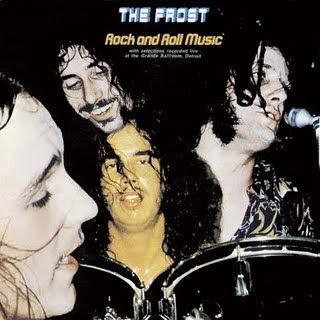
Between 1969 and 1970, the Frost released three long-players: "Frost Music," "Rock and Roll Music" and "Through the Eyes of Love."
Their debut LP, recorded at Vanguard studio on 23rd St. in New York, was produced by Charters. The disc featured ten tracks, with all but one composed by Wagner.
Unfortunately, the album's cover artwork was lackluster, with just the words "Frost Music / The Frost" on a black background. The record included a 12 x 12 sheet with lyrics to the songs.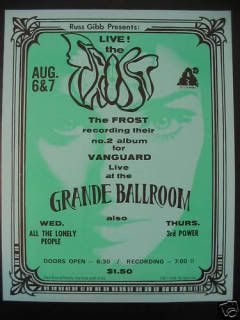
The second Frost LP was taped live at the Grande on Aug. 6 & 7, 1969 with engineer Ed Friedner, although considerable overdubbing was done later.
Frost's final LP was a studio effort with Vanguard studio musician Mike Tschudin added on keyboards.
Vanguard issued four singles, including "Rock and Roll Music," a Wagner composition which may be the group's best-known song.
One of the band's high points was an appearance at the Goose Lake Music Festival near Jackson in 1970, considered by many to be Michigan's version of Woodstock.
In an effort to gain national recognition, they played gigs in New York and at the legendary Fillmore West in San Francisco, where they opened for B. B. King on July 8-10, 1969.
The band became disillusioned, however, when audiences endorsed their shows but couldn't buy their records because they weren't being distributed beyond the Frost's base in Michigan.
By 1971, Alpena natives Hartman and Riggs quit and returned to their lower peninsula homes.
Wagner, however, had the desire to continue and went on to form Ursa Major. After one album the group parted ways and Wagner hooked-up with Lou Reed, former lead singer of the Velvet Underground.
Wagner's six-string talents are evident on Reed's live "Rock 'n' Roll Animal" album, which also included guitar slinger Steve Hunter.
Producer Bob Ezrin was impressed with the two guitarists and brought them into sessions he was conducting for Detroit native Alice Cooper.
During his tenure with the shock rocker, Wagner collaborated on the albums "Welcome to My Nightmare," "Goes to Hell," "Lace and Whiskey," "From the Inside" and "DaDa."
Cooper and Wagner co-wrote "Only Women Bleed," which reached No. 12 when it was released as a single in 1975. The song is about domestic abuse.
Wagner and Cooper actually co-wrote more than 50 songs which have appeared on 19 Alice Cooper albums.
Wagner's impeccable guitar playing has contributed to an impressive resume. He played on Peter Gabriel's first solo album and ghosted guitar parts for Ace Frehley on the "Destroyer" album from Kiss.
He has also played lead guitar or written songs for Aerosmith, Rod Stewart, Tina Turner and many others. In fact, Wagner has been featured on more than 150 albums.
In 2005, Wagner moved to Phoenix, Arizona where he suffered a heart attack two years ago. While he regains his health, Wagner is working with a new artist called Wensday.
Now 65, Wagner can look back at an enviable career in rock 'n' roll, which included that 1965 trek north of the Mackinac Bridge with the Bossmen. About that long-ago trip, Wagner remains us, "Winter in the U. P. is not kind."
